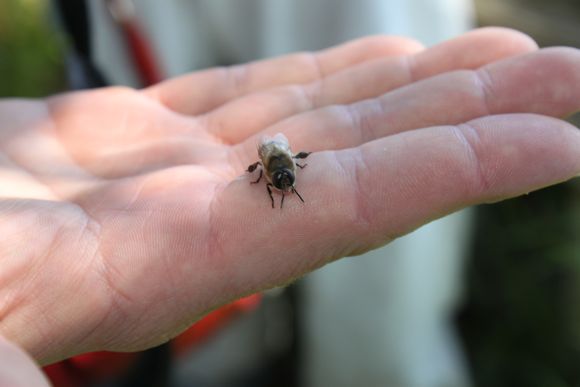
That’s not my hand holding a drone bee at Marshall’s Farm. It’s the skilled hand of chef and beekeeper James Barrett. I don’t think you’d ever call me a coward but I typically don’t go around handling bees. And really… what’s so scary about a few bees? Bees make honey and I love the sweet, sticky stuff. This field trip with the National Honey Board as part of Honey 101 at The Culinary Institute of America, allows me to relax and enjoy the buzz.
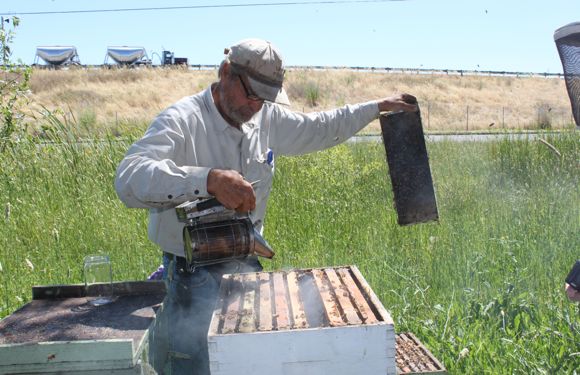
Spencer Marshall the chief beekeeper at Marshall’s Farm uses smoke to calm the bees for easier handling. When the bees smell the smoke, they tuck their heads inside of the comb and are less likely to sting. Not that Spencer seems too worried about a sting; no protective clothing for him.
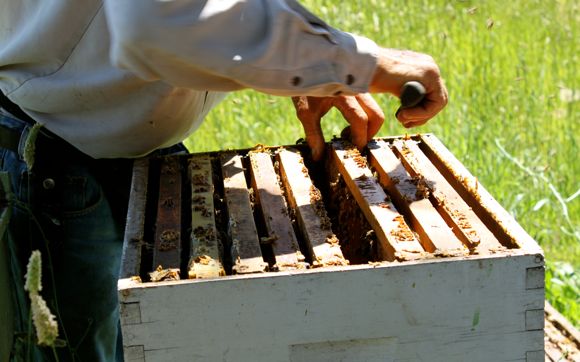
The wooden frames are gently removed from the hive with a palette knife. Look closely at each photo for bees in flight.
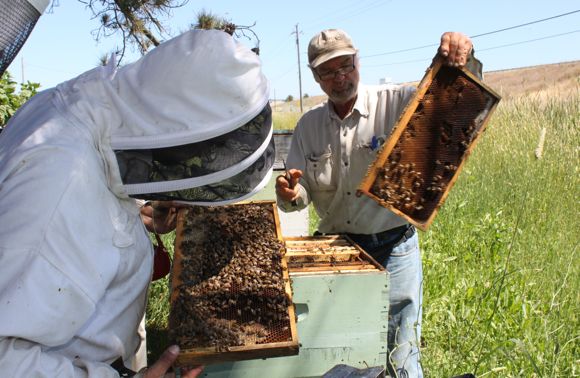
With the assistance of an intern, we gather around to get a closer look at “the girls,” as Spencer calls them. Although drones are male honey bees, they develop from eggs that have not been fertilized. Drones cannot sting, because their stinger is a modified ovipositor, an egg laying organ.
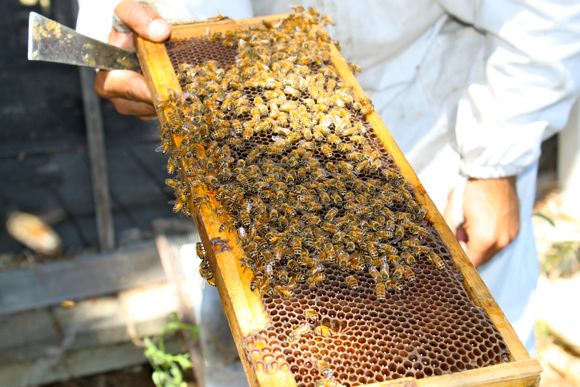
Did you know that honey is the only food consumed by humans produced by an insect? Bees flap their 4 wings about 11,000 times a minute, averaging speeds of 15 miles per hour. And it’s a good thing they are so speedy, honey bees must visit about two million flowers to generate a mere pound of honey.
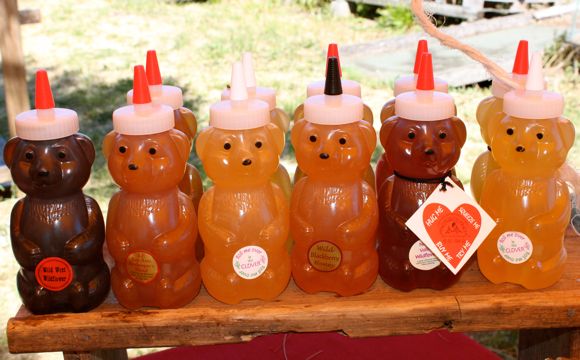
Marshall’s Farm transports hives from field to field as crops needs pollinating, thus producing several varieties of honey. All of their honey is raw, 100% pure, unfiltered and certified Kosher. Natural pollens float in the various varietals because Marshall’s Farm uses no filters when extracting and hand-bottling their pure local honeys.
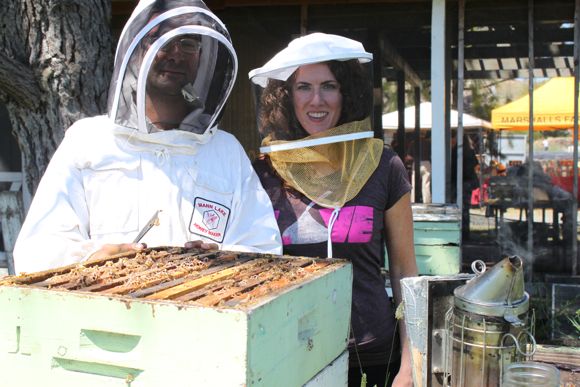
See? I look pretty relaxed, right? I mean, it’s not like this is a spider farm. Now that would be scary.
Read more about my journey to Napa with the National Honey Board here. More to come…
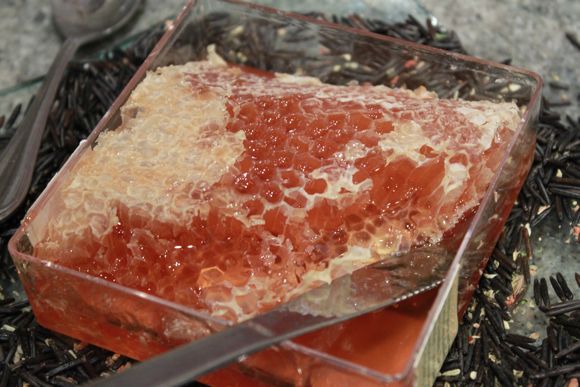
Special thanks to Spencer & Helene Marshall of Marshalls Farm, The National Honey Board, The Culinary Institute of America and EvansHardy+Young for making this hive to table experience possible.



And now we can add Bee-utiful Betty to the repertoire.
Great photos and info., Bee-utiful Betty! (Nice one, Mike :). You do look calm and relaxed!
Thanks, Andrea! Relaxed or at least pretending to be… such a fun day :)
Mike, you are just too darn SWEET! Get it?!? :D
Betty, if you ever find yourself mozying back to Florida, you should make an effort to go to the backwoods of the Panhandle to a little bump in the road called Wewahitchka.
There, you will find the only pure White Tupelo honey available anywhere. Tupelo from Florida is like a honey appellation. Once you try it, no store bought honey will ever do.
http://www.floridatupelohoney.com/tupelofacts.cfm
Wow, Mike! You know your honey! And I have family up in the Pan Handle :)
I was given a sample of Tupelo that I’ve yet to try — now I can’t wait! What do you like to do with honey? Do you cook or bake with it?
Real Tupelo only comes from that small area in the Panhandle around Wewachitchka and carries a certification of authenticity on the label. Love the name of the town (as well as neighboring Sopchoppy). The Tupelo from the other parts of the South can be mixed with honey from the Black Tupelo tree. It’s like getting Cabernet from Newark instead of Napa.
I don’t bake or cook with it. The flavor is so fine, I eat by itself, usually with biscuit.
Did you know that tupelo won’t crystallize and can be eaten by diabetics?